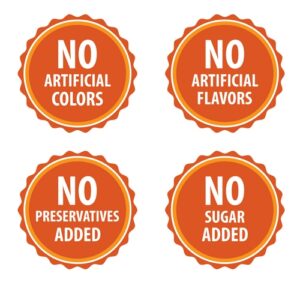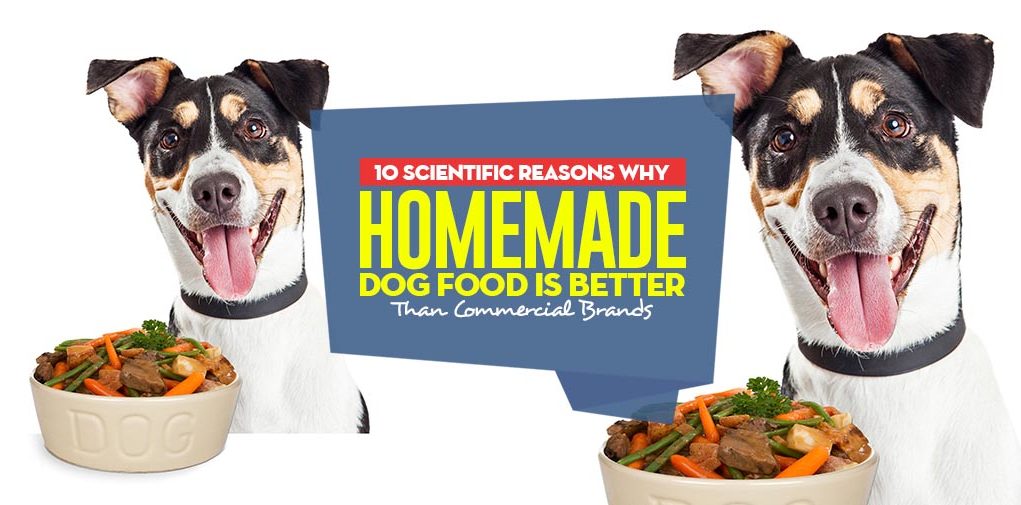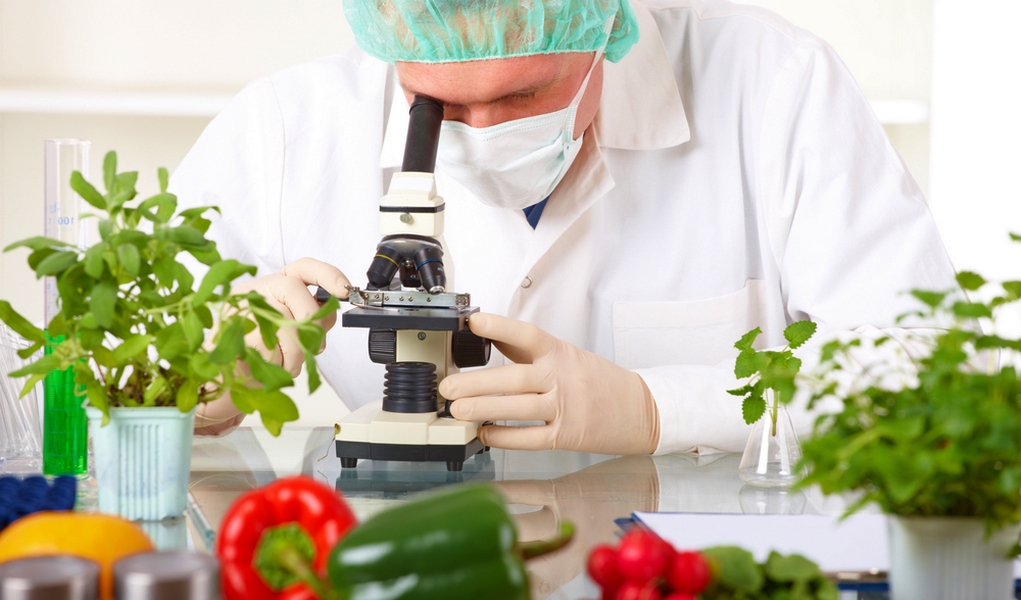Almost everyone has that one home cooked dish that brings about a sense of nostalgia and good feeling. It is then surprising for most people when they find out that not only do dogs like homemade pet food, but it is actually better for their health. When people make their dog’s food right in their kitchen they are able to control and regulate it better than most commercial facilities.
Dog owners no longer need to wonder if the contents of their dog’s food actually contains what is listed on the label. There are plenty of other reasons which includes, but is not limited to, decreasing the amount of preservatives that a dog consumes all the way to having the ability to make changes to the food to accommodate for dietary sensitivities.
Preparing homemade dog food need not be a chore or a bore. Rather, dog owner’s should look at this – according to some veterinarians – as taking a proactive approach in their dog’s health and well-being. Homemade dog food allows dog owners to be intimately familiar with what their dogs are ingesting.
Furthermore, the practice also allows them to make subtle, yet important changes to their dog’s nutrition whether it be due to aging, illness, allergy or what have you. All in all, homemade dog foods are better not just for the dog, but the act of making is better for their owners as well.
RECIPES: Best Homemade Dog Food Recipes for Health
10 Scientific Reasons Homemade Dog Food is Better Than Commercial Foods
1. Commercial dog food is loosely regulated
We've talked about this many times, and listed plenty of controversial facts about the pet food industry before, but some pet owners are still not aware.
Although the FDA (Food and Drug Administration) does regulate pet food products, the regulations are loose. For example, according to the FDA website: “There is no requirement that pet food products have pre-market approval by the FDA.” In addition, the FDA only reviews pet foods to ensure that the ingredients are safe and have an appropriate function, but does not oversee the quality of the food.
The FDA does have oversight on pet food labels, to ensure that the product is properly identified and the ingredients are declared. However, currently, there are no regulations relating to the absorbability, digestibility and overall quality of pet food.
According to the FDA website, ingredients, such as certain colorings are permitted as long as they are declared on the label. However, as will be discussed in a later section, the use of artificial colorings may not be safe for your pet.
MORE INFORMATION: Homemade Dog Food vs Commercial Brands
2. Rendered protein in commercial pet foods
Retail pet food typically contains rendered meat, which are essentially random pieces or parts of an animal. In some cases, the meat may come from dead, dying, diseased or disabled animals.
During the process of rendering, lean meats are separated from the fats. The fats and oils are then heated and purified into lard or tallow.
In many cases, rendered meats are listed as one of the first four ingredients in pet food. The oils and fats from the rendered meat can lead to gastrointestinal complications in your dog. In addition, the use of chicken parts, such as beaks and feet, may do damage to your dog’s small intestine.
Perhaps most shocking is the claim that “rendered meat” can also refer to euthanized animals from dog shelters. In fact, an FDA study looked at different samples of pet foods and found it contains sodium pentobarbital, an agent that is used to euthanize animals in shelters and veterinary hospitals.
By feeding your dog homemade foods, you can control the protein sources your dog is eating and ensure they come from a known and reliable source.
3. Grains in many dog food brands
Many commercial pet foods contain high amounts of additives in the form of grains: like soy, corn, wheat or rice, as fillers.
In general, we've seen studies that show how dogs have issues with digesting grains. Glutenous ingredients also can be harmful to dogs, and can cause inflammation and allergic reactions. This is not the case with all grains and for all dogs, yet it's still worth considering for both commercial dog food brands and homemade meals.
4. Additives and preservatives in commercial foods
 Most commercial dog foods use additives and preservatives to prevent it from spoiling over its shelf life, whereas homemade foods do not require the use of preservatives. A common preservative used in dog food is a chemical called ethoxyquin, which is also a pesticide and may increase the risk of toxicity in dogs.
Most commercial dog foods use additives and preservatives to prevent it from spoiling over its shelf life, whereas homemade foods do not require the use of preservatives. A common preservative used in dog food is a chemical called ethoxyquin, which is also a pesticide and may increase the risk of toxicity in dogs.
Other negative side effects of consuming foods that contain ethoxyquin are:
- liver cell death
- a decrease in physical activity
- discoloured urine
- pale gums, which indicates bad circulation
BHA (butylated hydroxyanisole) and BHT (butylated hydroxytoluene) are also common preservatives in pet food and are currently labeled by the World Health Organization and the State of California as carcinogens.
5. You can (and should) add the fruits and veggies
Several dog friendly vegetables and fruits are packed with nutrition, vitamins, and minerals that are healthy for your dog. As it stands, commercial dog foods can be limited in terms of the fruits and vegetables it contains.
By providing your pet with homemade foods, you can decide what nutrients they get. For example, carrots and brocolli are an excellent source of thiamine, niacin, vitamins A, B6, C, and K, folate, manganese, potassium, and dietary fiber. Sweet potatoes are packed with beta-carotene and Vitamin A and are nutritionally dense.
There are many fruits good for dogs. Some of these are proven to be not only healthy and nutritious as treats for dogs, but even recommended as part of the diet.
Most popular fruits for dogs are apples, bananas, and watermelon. Apples contain Vitamin K and soluble fibers that are good for a dog’s teeth and intestines. Bananas contain large quantities of potassium which can provide energy to your dog. Similarly, watermelons are high in Vitamin B6, which is necessary for the health of the blood vessels.
RECOMMENDED: 8 Tips On Super Foods for Dogs From Experts
6. Control of allergies in dogs
 With homemade foods, you can eliminate those foods that are allergens for your pet. For example, your dog may be allergic to certain types of proteins. One study shows that beef and soy are two ingredients that most often resulted in negative cutaneous reactions.
With homemade foods, you can eliminate those foods that are allergens for your pet. For example, your dog may be allergic to certain types of proteins. One study shows that beef and soy are two ingredients that most often resulted in negative cutaneous reactions.
Another study looked at food allergies in dogs and saw that they resulted in pruritic skin disease, and gastrointestinal signs, such as the presence of faecal mucus and blood, and increased faecal frequency.
Trying to eliminate the foods that your dog is allergic to may be difficult with commercial dog foods. However, with homemade foods, you can remove those foods that your dog may react negatively to.
7. Balanced diet for your canine
A balanced diet for your dog should contain an animal protein, vegetables, fats, and micronutrients. The most vital micronutrients are Vitamin C, magnesium, calcium, and phosphorus.
A lot of dog kibbles use the claim on their packaging that their food is “complete and balanced”. However, this claim requires that the following be true for dog food:
Adult food must contain a minimum of 18% protein and 15% fat, whereas puppy food must contain a minimum of 22% protein and 8% fat. In both cases, there are no maximum amounts [Source]
This means, that according to AAFCO regulations for dog food nutrition, adult dog food can be considered “complete and balanced” if it contains 18% protein and 82% fat! With homemade dog foods, you can better control the protein and fat in your pet's diet.
8. Easier to maintain weight of your Fido
 As discussed in the previous point, commercial dog food has the potential to be high in fat (up to 82%) and still be considered a “complete and balanced” food. Foods high in fat can contribute to weight gain and obesity in your pet.
As discussed in the previous point, commercial dog food has the potential to be high in fat (up to 82%) and still be considered a “complete and balanced” food. Foods high in fat can contribute to weight gain and obesity in your pet.
High fat diets in normal dogs are associated with cirrhosis of the liver. High fat diets have also been linked to the formation of tumors and gut inflammation.
In a survey including 1,000 dogs, it was shown that canines that received a proprietary dog biscuit as part of their diet had a higher incidence of obesity compared to dogs that did not. Although providing homemade foods allows owner to control their dog’s food intake and quality of food, it is important to not overdo it.
RELATED: 6 Must-Know Tips for Making Your Own Homemade Dog Food
9. Raw diet for dogs
As part of your dog’s homemade food diet, raw meat diet can be incorporated. In general, processed food, like in commercial dog food, is unnatural, less wholesome and incomplete.
In the wild, dogs eat raw meat, bones, and organs, instead of cooked and fortified foods, so it makes sense to incorporate raw foods into their diet.
- MORE INFO: Is the Raw Food Diet Safe for My Dog?
During the manufacturing of pet food, proteins and amino acids may be heated, which can result in a number of physical changes. This can have negative effects on protein digestibility and amino acid bioavailability.
Raw foods, on the other hand, can have positive effects on the gut health of your dog and are more easily digested by your dog compared to cooked and processed foods. Raw foods can also improve immune function.
 10. Feeding the same food everyday limits nutrition
10. Feeding the same food everyday limits nutrition
Feeding your dog the same kibble every is analogous to a human eating the same cereal every day. Providing your dog a variety of homemade foods can improve nutrition and prevent allergies in your pet.
In fact, intestinal upset when switching foods is a sign that your dog needs more variety. By making homemade foods for your dog, you can ensure that they get variety in the meals so they can get the best balance in nutrients and vitamins.













